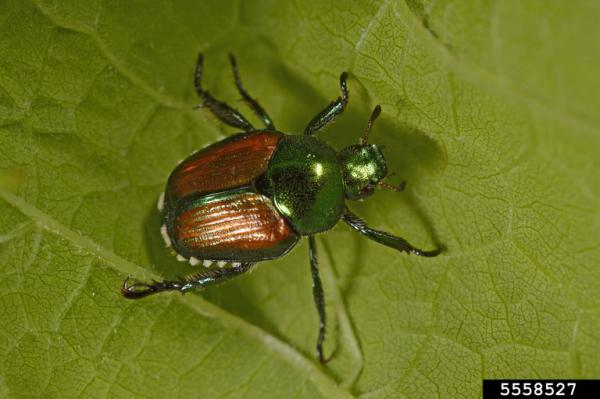Popillia japonica Newman, 1841 (ITIS)
Japanese beetle
Japan (Potter and Held 2002)
First discovered in 1916, but was probably introduced around 1911 (Potter and Held 2002)
Possibly in the soil of imported ornamental plants (Potter and Held 2002)
Destructive pest of turf, landscape plants, and crops; adults feed on the foliage and fruits of several hundred species of trees, shrubs, vines, and crops, while larvae feed on the roots of grasses and other plants (APHIS 2015)

Japanese beetle, adult
Photo by Josesph Berger, Bugwood.org
Find more images
Spotlights
Distribution / Maps / Survey Status
Federally Regulated
Videos
All Resources
Selected Resources
The section below contains highly relevant resources for this species, organized by source.
Council or Task Force
Partnership
Federal Government
International Government
State and Local Government
Academic
APHIS. 2015. Managing the Japanese Beetle: A Homeowner’s Handbook [PDF, 1.24 MB]. U.S. Department of Agriculture, Animal and Plant Health Inspection Service.
Integrated Taxonomic Information System. Popillia japonica. [Accessed Sep 16, 2023].
Potter, D.A., and D.W. Held. 2002. Biology and management of the Japanese beetle. Annual Review of Entomology 47:175-205.
 An official website of the United States government.
An official website of the United States government.